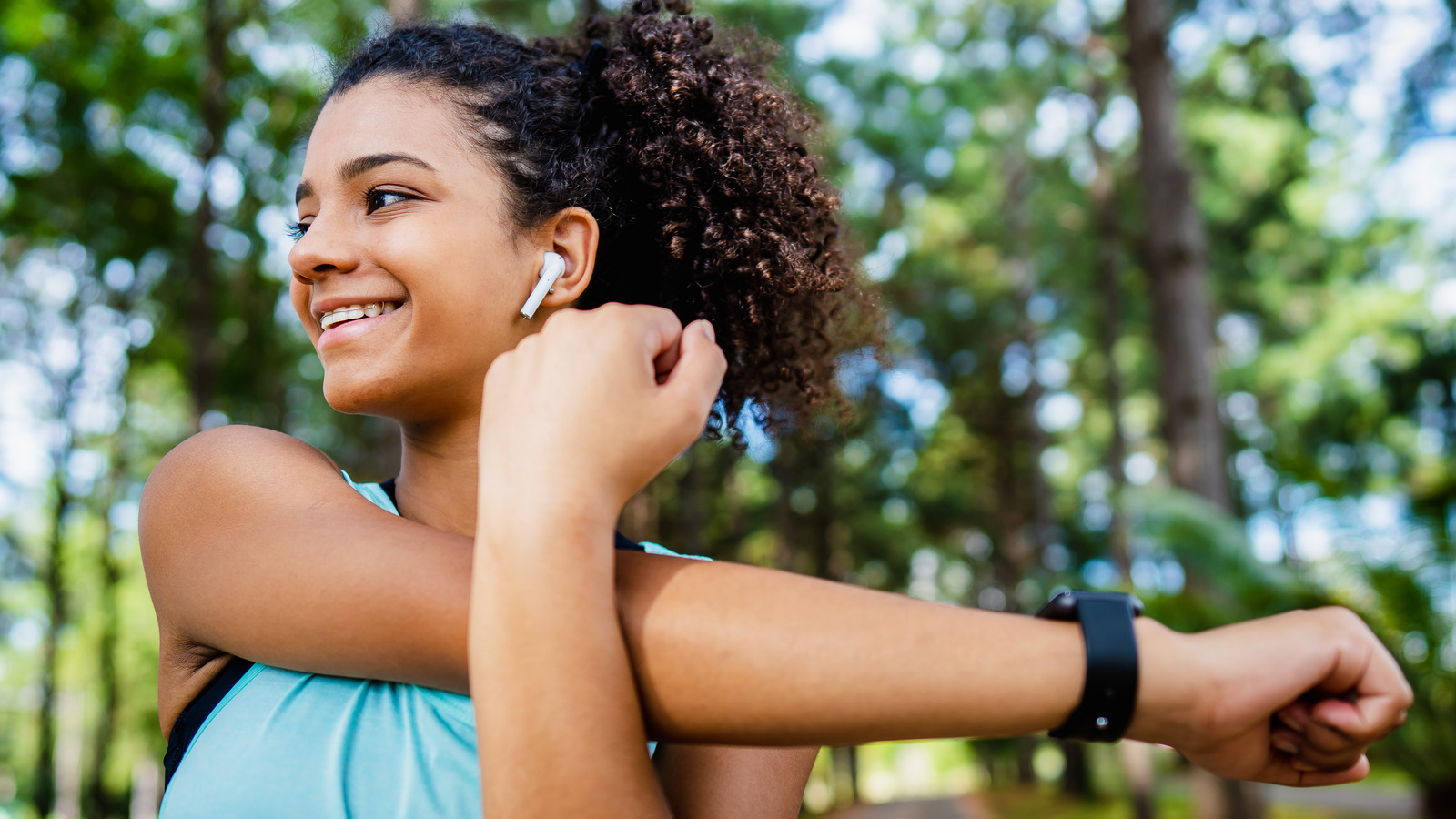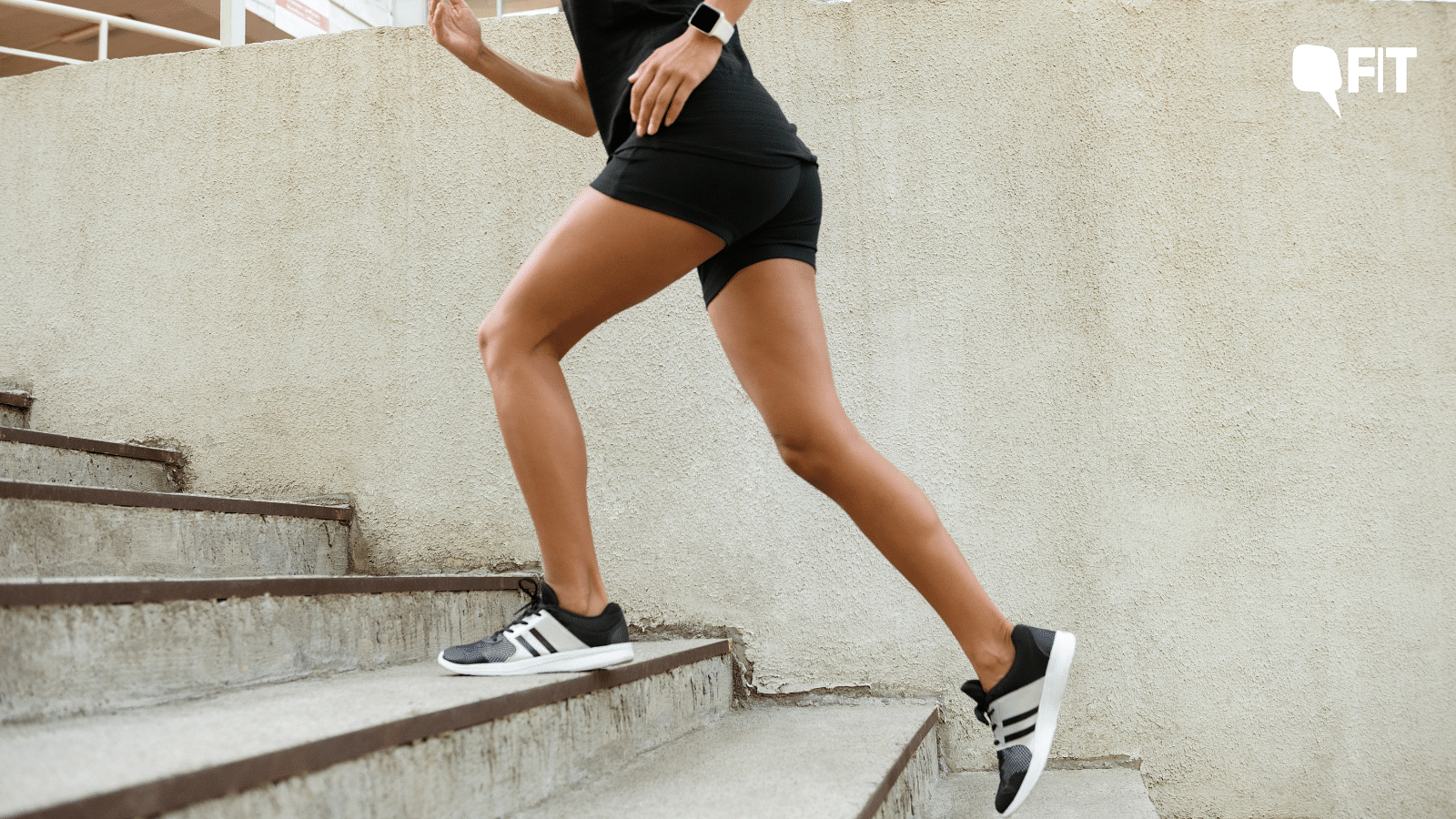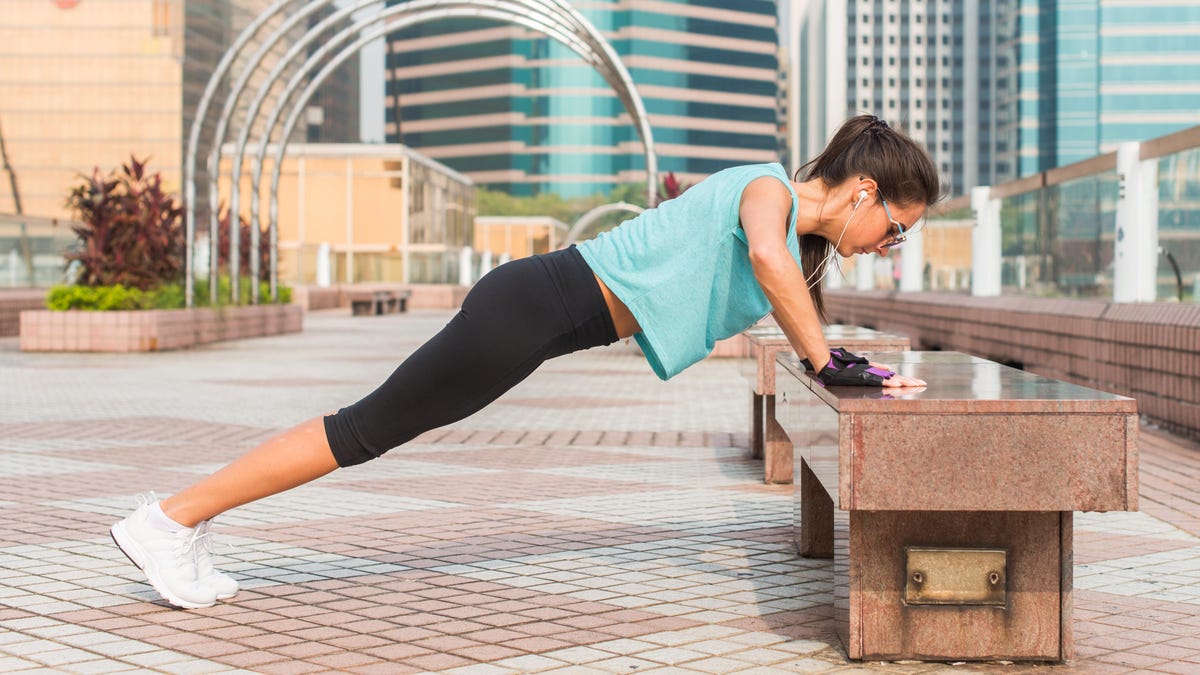Fitness
This exercise has a huge effect on our health and longevity, but many of us ignore it
In the pursuit of fitness, we might turn to some great activewear, a pool membership or a daily walk — all good and important stuff.
But many of us forget about building strength — despite the fact that, as we age, retaining muscle has the power to transform our lives.
“It’s really vital,” David Scott, an exercise scientist at Deakin University, tells ABC RN’s Life Matters.
Strength training lowers your risk of heart attack and other heart disease, stroke and cancer.
It also impacts your ability to lead a healthy life as an older person — something that’s not well understood, Dr Scott says.
“We need to change the narrative … that it’s somewhat inevitable that we’re going to get to a point where we’re not able to take good care of ourselves and … where we don’t have a level of independence,” he says.
“It’s really important for people to understand that you can … avoid getting to that point.”
Here’s how.
First, what do muscles do for us?
“Muscle has gotten a bad rap,” says Gabrielle Lyon, a functional medicine practitioner and author based in the US.
She’s referring to skeletal muscle — the muscle we use to move our bones — as opposed to, say, the cardiac muscle in our hearts or the muscle in our digestive systems.
“When you think about muscle, you typically think about guys grunting in the weight room or being jacked and with a skinny tank top and a tan. But skeletal muscle is so much more than that,” says Dr Lyon, the author of Forever Strong: A New Science-Based Strategy for Aging Well.
“In fact, being physically fit and having good athletic performance is a by-product of having healthy skeletal muscle.
“[It] probably has the biggest impact on our health and longevity as we age.”
The main function of skeletal muscle is to help us move around. But it’s also a really important site for glucose disposal, Dr Scott says.
By storing glucose in our muscles, we don’t have as much sugar floating around in our blood, which helps maintain healthy blood sugar levels.
And without that balance, the risk of metabolic illness, such as diabetes, can rise.
Our muscles as we age
Sarcopenia, the process of losing muscle mass and strength with ageing, generally begins in our 30s and 40s and speeds up in our 60s, 70s and 80s, Dr Scott explains.
That’s when it can present some serious challenges as we go about our daily lives — managing a house or a garden, for example. Sarcopenia has also been linked to cognitive decline.
“Eventually we can get to a point where we lose our independence and need support from a carer or potentially to enter aged care. It increases our risk of falls and fractures. And these are major public health issues for our ageing population,” Dr Scott says.
But, though there’s a decline in what our muscles are capable of as we age, there’s plenty we can still do to maintain a healthy, strong body.
“It is not about being bigger. It’s truly about being able to be functional,” Dr Scott says.
“We’re being active to become better at life, to be able to move through life in a way that keeps us ultimately out of nursing homes, that prevents falls, that allows us to get groceries and put them away and carry them back [home] and put our suitcase overhead.
“That’s why we’re actually doing these things.”
How to build muscle
We should be including strength training in our exercise routines at least two days a week, for about 30 minutes to an hour each time, Dr Scott says.
He suggests trying to do three sets of six to 12 repetitions of each strength-building exercise. And there are plenty of different ways to do them.
“Sometimes there’s a perception that we need to go to the gym to do this type of training. But you can do it at home just using your own body weight.”
Body weight exercises include squats, movements like the bird dog or dead bug (look them up — they’re easier than they sound), or a sit-to-stand exercise where you sit in your chair and rise up without using your arms, as quickly as possible.
You don’t need to carve out a block of time in your day. Small amounts of exercise — for example, a few 10–15-minute blocks — at various points in a day is “absolutely” effective for strength training, Dr Scott says.
And if you’re using weights, he recommends starting by lifting about 40 per cent of the maximum weight you can lift for each exercise. Then as you improve, you can gradually increase it to about 80 per cent.
Resisting exercise stress and pressure
Ella Mason, a gym coach and owner of Pony Club Gym in Melbourne’s north, says people are often held back from exercise because they think that unless they’re doing three or more sessions a week, there’s no point.
“But [doing] anything once a week is more than doing nothing … Any movement is good, or any routine is good,” Mx Mason says.
“It’s better to aim for a routine that’s doable, so you’re more likely to maintain it over a lifetime, which is more beneficial than stopping and starting.
“But also, it’s okay to take a break as well … You’ve got to go with where your body’s at because life is in flux and energy is in flux as well.”
Mx Mason says there are misguided ideas floating around about “sporty people and non-sporty people”, or those who can perform certain moves, and those who can’t.
“That’s a load of rubbish,” they say.
“I’ve seen all bodies do all things, if given the opportunity and the right information.
“Our bodies are literally made to move. And I think having the confidence and support to do that is really the only issue.”
RN in your inbox
Get more stories that go beyond the news cycle with our weekly newsletter.

Fitness
Fitness Myths From TikTok You Should Immediately Stop Believing – Health Digest

If you love to dance, you should continue to dance for your health and your overall wellbeing. But don’t focus strictly on TikTok’s “weight loss dance,” because it just won’t yield results that you hope to see. This was popularized when a TikTok user posted a video of herself performing a now-viral dance that purports to burn body fat and help you lose weight fast. While the user claims to be a fitness instructor, there are no credentials or otherwise notable details that impart any confidence in the dance claim.
It’s not limited to one user, though. As these TikTok videos go viral, people begin to believe every word. Certified nutrition coach Joanne Schell says to Shape, “Posts like this put value primarily on outward appearance; in truth, a six pack is either genetically created or takes significant diet and exercise changes — often to the point where sleep, social lives, and hormones [can be] disrupted and disordered eating [can] arise.”
As the user responsible for the viral dance video claims that the routine will “reduce” the abdomen, it’s important to be mindful of what you’re watching and falling prey to fad diet trends. Psychologist Sirin Atçeken tells Cosmopolitan, “We are constantly bombarded by adverts selling us unrealistic expectations, ‘quick fixes,’ and easy way-outs. In a time where we are calling out fake news, it can be quite dumbfounding that certain content even passes advertising standards.”
Fitness
How to train your brain to truly enjoy exercise, according to science

Truth: They woke up like this. Some people really are more inclined to find joy in exercise. But! You can rewire your brain to join that ‘love it’ group, research shows.
When experts measured the electrical connectivity in the brains of people who are recreationally active, they found that those who perceive themselves as being highly tolerant of physical effort had greater levels of ‘remembered pleasure’ afterward, according to the new study by Florida International University. Meanwhile, those who said they were not as tolerant had a certain amount of ‘anticipatory dread,’ or negative feelings, before the work even started.
The good news is that you can teach yourself to be more accepting, physically and mentally, of movement—which will help you feel excited about exercise in general and crave it more often. By trying some (or all!) of these tactics, you’ll likely notice benefits immediately, says study lead Marcelo Bigliassi, PhD. To extend the effect, keep efforts ongoing, so subtle changes compound over time. Onward!
Meet the experts: Marcelo Bigliassi, PhD, is an assistant professor of neuroscience and psychophysiology at Florida International University. Diogo Teixeira, PhD, is a professor on the physical education and sport faculty at Lusófona University in Lisbon, Portugal.
1. Add appeal to the flavour of exercise you already like.
Let’s say you don’t mind weight lifting but definitely don’t have the can’t-wait feels leading up to a workout. You can create artificial motivation and enjoyment by listening to music or a podcast while you sweat, using virtual reality, or even just engaging in positive self-talk, Bigliassi says. Or perhaps lifting with a group or a friend is the missing ingredient for you. ‘You’re creating outside signals that can help you push a little bit harder and a little bit faster.’ The goal is to foster positive experiences with your sweat sessions. Gradually, the emotion will become second nature without these external cues.
Not sure where to start with finding your best-match activity? Think back to your recent past, and even to your childhood, says Bigliassi. ‘There are usually clues.’ For example, if you used to love swimming at your neighborhood pool, maybe that could translate to swimming laps at your local gym. Or perhaps you were a dancer at one point in your life. Taking a virtual or IRL dance fitness class could spark passion.
2. Challenge yourself *just* enough.
No matter what you’re doing, the activity needs to be tough enough that you’ll have a feeling of accomplishment that makes you want to repeat it. But it should also be within your capabilities, in order to protect your sense of self-efficacy (that is, your belief in your abilities), says Bigliassi. When people experience an exercise intensity that’s not aligned with their preference or tolerance, they exercise less in the future, research shows.
Take this thinking a step further: By choosing, say, a running pace you consider pleasurable (read: not all-out), you may find running more enjoyable—and more easily repeatable in the future. This ‘autonomy promotion’ also applies to resistance training, says researcher Diogo Teixeira, PhD. So if resting longer between sets makes you feel better, do it. (It’ll create those positive associations in your brain.) ‘More is not always better, and a pleasurable activity will be more easily sustained over time,’ Teixeira says.
Monitoring with a tracker can also allow you to see the work you’re putting in, which improves mindset around fitness and, therefore, happiness pertaining to exercise, found a study in the Journal of Medical Internet Research.
3. Send your mind a motivational sign.
Humans are wired to save as much energy and store as much fat as possible. So, sometimes—and especially when exercise gets intense—you need to remind yourself why you’re going through this perceived insanity. ‘It’s difficult for some parts of our brain to make sense of exercise,’ Bigliassi says.
For example, recalling that cardio is important for both heart health and cognitive function can act as a motivational signal. That helps you feel more positive in the moment and be more consistent with exercise down the road; you now associate the activity with purpose and appealing health outcomes. Surprisingly, negative thoughts can also act as positive signals (e.g., envisioning your energy and mood tanking from not moving that day can be incredibly powerful). Consider this your sign to go for a walk or gear up for a workout right about…now.
More fitness stories…
Fitness
Exercise tips: 10 healthy drinks that boost stamina, help muscles recover faster

-

 News1 week ago
News1 week agoIs this fictitious civil war closer to reality than we think? : Consider This from NPR
-

 World1 week ago
World1 week agoShipping firms plead for UN help amid escalating Middle East conflict
-

 Politics1 week ago
Politics1 week agoICE chief says this foreign adversary isn’t taking back its illegal immigrants
-

 Politics1 week ago
Politics1 week ago'Nothing more backwards' than US funding Ukraine border security but not our own, conservatives say
-

 News1 week ago
News1 week agoThe San Francisco Zoo will receive a pair of pandas from China
-

 World1 week ago
World1 week agoTwo Mexican mayoral contenders found dead on same day
-

 Politics1 week ago
Politics1 week agoRepublican aims to break decades long Senate election losing streak in this blue state
-

 World1 week ago
World1 week agoBrussels, my love? The EU single market is not sexy enough for voters





/cloudfront-us-east-1.images.arcpublishing.com/gray/R3OKODPB3JHZJLQRDA442GQV7Y.jpg)












